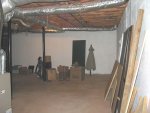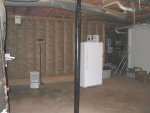JohnnyMan
New member
Readers,
My wife has given me permission to build a recording studio in my completely unfinished basement.
I am a hobby songwriter/musician/recording engineer/producer/…etc. I’ll be using a little less than ½ of the basement. Pictures to follow soon. The portion of the basement I’ve decided to use has two concrete walls that are underground. I still haven’t decided upon the dimensions of the studio and vocal booth. My goal is to make it a functional studio yet when I want to sell the house, I don’t want this home to only appeal to people like us (recordists). I do have intensions of wiring it for XLR connectors and ¼” patch cords. I live in a suburb of Atlanta therefore air conditioning (AC) will be vital. I had read that if you make your ducts make 90-degree turns, this reduces a lot of the noise coming from the AC. Apparently sound does not go around corners very well. I’m wondering if it’s worth bothering with the extra ductwork. Also I had read that making the walls not parallel with each other reduces reflections. Is that worth it?
I have been reading a few threads on this web site and I would very much appreciate any tips, wisdom, incite, and help on designing this studio.
My wife has given me permission to build a recording studio in my completely unfinished basement.
I am a hobby songwriter/musician/recording engineer/producer/…etc. I’ll be using a little less than ½ of the basement. Pictures to follow soon. The portion of the basement I’ve decided to use has two concrete walls that are underground. I still haven’t decided upon the dimensions of the studio and vocal booth. My goal is to make it a functional studio yet when I want to sell the house, I don’t want this home to only appeal to people like us (recordists). I do have intensions of wiring it for XLR connectors and ¼” patch cords. I live in a suburb of Atlanta therefore air conditioning (AC) will be vital. I had read that if you make your ducts make 90-degree turns, this reduces a lot of the noise coming from the AC. Apparently sound does not go around corners very well. I’m wondering if it’s worth bothering with the extra ductwork. Also I had read that making the walls not parallel with each other reduces reflections. Is that worth it?
I have been reading a few threads on this web site and I would very much appreciate any tips, wisdom, incite, and help on designing this studio.



